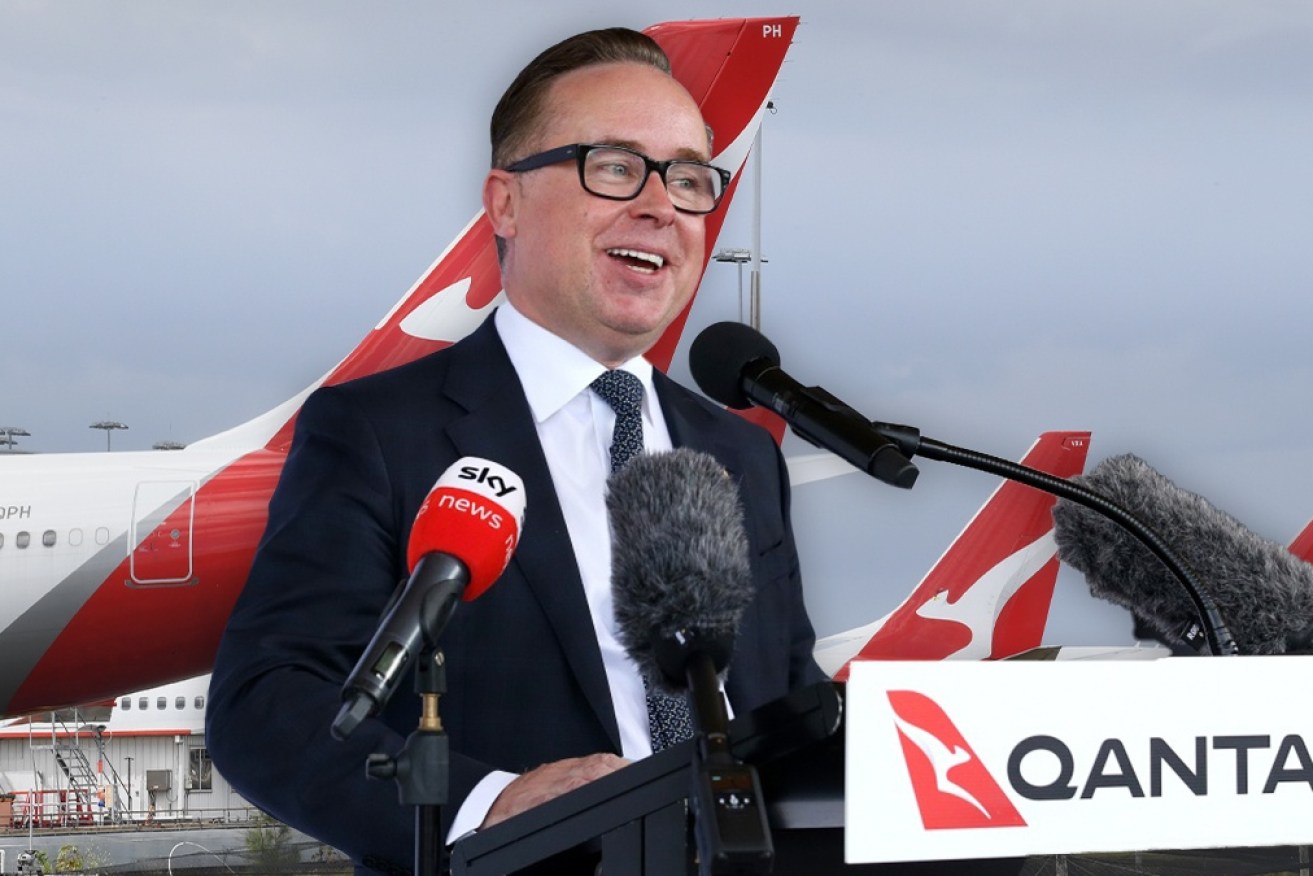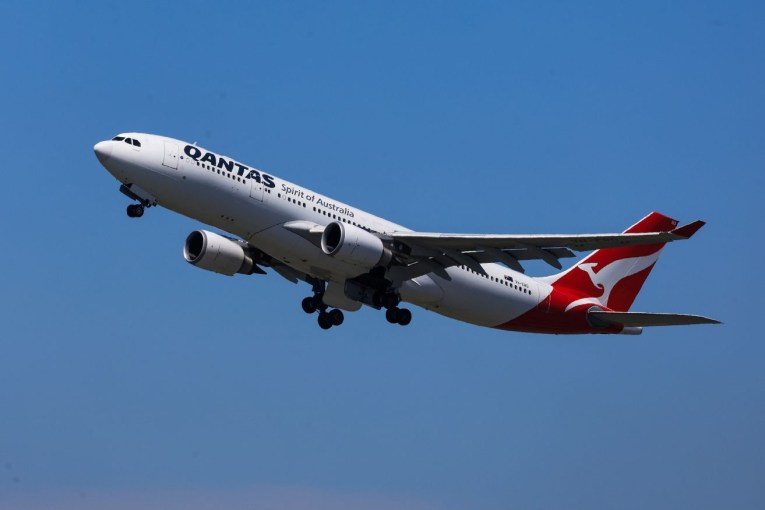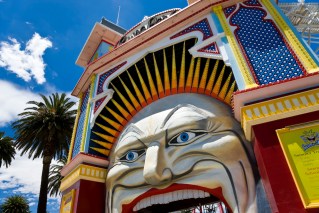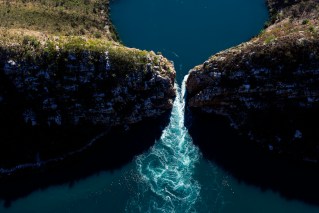No accounting for Qantas crying poor, not with its solid cash flow and $3.3bn in the bank


Alan Joyce was surprisingly upbeat for a CEO announcing a $1.9 billion loss. Photo: TND
Ain’t accounting grand? The headlines shout that Qantas had a “larger than expected” loss before tax of $1.9 billion last year, “as total COVID losses neared $7 billion” – yet it has announced a $400 million share buyback, has $3.3 billion in cash sitting in the bank and is enjoying its lowest debt level since the GFC.
You might wonder how a company can lose $7 billion yet reduce debt and launch a big share buyback. And it’s on the acquisition trail as well, having purchased control of online travel company TripADeal while also seeking ACCC approval to buy one of its competitors, Alliance Airlines, for $614 million.
There’s no dividend for shareholders though. Qantas prefers share buybacks to reward shareholders as it has no franking credits to dish out. (Buybacks also tend to juice up executive bonuses that include “total shareholder return” as a key performance indicator.)
Not having franking credits is what happens when a company doesn’t pay tax. Indeed, Qantas has recorded a tax credit over the past two years of nearly a billion dollars – it will be some years before the ATO gets a cut.
Share price takes off
So bad was that “larger than expected” $1.9 billion, the share price jumped to $5.01 on the news, meaning it was up 12.5 per cent on Wednesday’s close, briefly boosting the company’s market capitalisation by more than a billion before settling at $4.88 for a 7.5 per cent gain on the day.
The share price reaction was partly because the market tends to look forward rather then back, and Qantas chief Alan Joyce was painting a very rosy picture of the way ahead.
But it also was because the market looked through the ocean of accounting red ink in the headlines to see what had really been going on.
Indulge me while I digress a little: In the time I worked at Channel Nine, Kerry Packer only once called me about a story I had done. It was when Rupert Murdoch’s over-extended News Corporation was in deep trouble during the 1990 recession, on the verge of failing if a deal couldn’t be done with a gaggle of banks.
News Corp’s bonds were being heavily discounted and, via Murdoch’s Hong Kong operation, there was a snapshot of what News Corp was telling the tax man about its profitability – it wasn’t. I suggested the bond market and the tax records were saying News’ days were numbered.
Packer Snr didn’t try to tell me what to report, but he did offer a line of advice: “It’s the cash flow, look at the cash flow.”
Underneath all the Qantas headlines on Thursday, the company had “positive statutory operating cash flow” of $2.67 billion.
In brief, Qantas took in $2.67 billion more than it paid out. Spare me the attempts to cry poor – accounting is indeed grand.
That’s how it was able to cut its net debt by the better part of $2 billion, from $5.89 billion to $3.93 billion.
Sure, that $2.67 billion free cash flow isn’t as good as the $3.16 billion in pre-COVID 2019, but it was achieved as a smaller operation.
Away from the actual accounts, the PR team was in full swing. The ABC’s Peter Ryan saw it coming on Monday when the “apology” and $50 discounts were being handed out.
“The Group is delivering a record amount of training with more than 1500 people joining the organisation and around 1000 internal appointments made since April 2022,” said Thursday’s media release.
Meanwhile the investors’ presentation highlighted the 9800 “exits”.
This graph (and don’t you love the euphemism “rightsizing”) only shows the 8800 Qantas “headcount” exits. There were another 1000 contractor “exits”.
“Since the start of the pandemic, the group has lost $25 billion in revenue and accumulated losses of $7 billion,” said the release.
Now $25 billion sounds like a lot to lose, but of course it simply wasn’t there. It was money that didn’t come in, just like all the money that didn’t go out because the airline wasn’t flying and was being supported by the Australian taxpayer.
It’s a bit like the $8 million I “lost” last night when I didn’t win Powerball.
You have to search hard through the corporate announcement to find acknowledgement of the government’s role in the billions Qantas is making.
I did find: “Full return of Australian-based employees from December 2021, core aviation skills retained throughout COVID, supported by government programs.”
That’s well short of owning up to being Australia’s biggest corporate welfare recipient, the title Qantas arguably deserves with $1.2 billion gifted as the Morrison government missed the opportunity to take a little equity in the upside.
Socialising losses, privatising profits
Qantas says its $400 million share buyback is in return for shareholders subscribing for $1.4 billion in new capital during COVID. It didn’t bother reminding anyone that it spent $637 million on its own shares in 2019 before COVID hit.
It used to be called “agrarian socialism” – socialising losses, privatising profits. Yes, you might wonder what taxpayers have received for all they have put in.
Oh well, there is the PR promise of: “$270m investments in the customer experience — 50% more Classic Flight Reward seats on international, Trans-Tasman and domestic routes3”
That little “3” takes you to the footnote explaining it’s really “up to 50%” – meaning no particular number at all.
The bottom line is that Qantas management has done a great job for its shareholders, coming through the COVID crisis outstandingly well.
And it is a good thing to have a couple of strong airlines operating domestically.
You just wouldn’t want to take the accounting and PR spin too seriously. And you could certainly wonder about the Commonwealth’s lost opportunity – one of many over the past decade.









